“…we wish to make it clear that departure from the Church’s teaching, or silence about it, in an effort to provide pastoral care is neither caring nor pastoral. Only what is true can ultimately be pastoral. The neglect of the Church’s position prevents homosexual men and women from receiving the care they need and deserve.” – Letter to the Bishops of the Catholic Church on the Pastoral Care of Homosexual Persons
In 1999, I began my self-imposed exile from almost everything I had ever known. I left San Francisco, and the Castro District – a neighborhood that had been my home for the past 10 years. I thought that my life was inexorably linked to that place. I had arrived there over a decade before as a lost and forsaken young man. For most of my life, other boys at school, and even a local Catholic priest, repeatedly told me that I was gay; in fact, God had made me this way. After a while, I believed them.
Following a difficult childhood filled with isolation and persecution, I was desperate. When I was growing up, my superficially happiest moments occurred while I was surrounded in the thick fog of fantasy – I imagined a place where I could hang-out with The Village People at the YMCA. I thought I found such a sanctuary as soon as I arrived in San Francisco. But that honor to be so near the holy of holies came at a dear price – I had to watch as friends and lovers died an early death; and living with the constant fear that I would soon join them. But my fear of endless disaffection was greater than my fear of death.
As a gay man, I was always outwardly busy, but I was frequently bored. Initially, just the thought of being physically touched by a man was enough to excite me; later, even while surrounded by a roomful of naked men, there was an expanding void within me. Suddenly, I realized that nothing was real; not even my boyhood fantasies that so long served as my inspiration. Instead of leading me into a world where I could finally belong, I was lonelier than ever. Now, the bargain I made earlier with myself – the possibility of contracting an incurable disease in exchange for receiving some sense of male affection and support – didn’t appear to be such a great deal. I panicked. And in the midst of this terror, I returned to the Catholic Church. I still don’t know exactly why.
At first, I have to admit, there was something hideously appealing about a rainbow flag flapping in the wind outside the nearby parish. I thought: At least they will be able to understand me. But I heard it all before:
- You were born gay;
- God made you gay;
- This is a blessing…
I knew all of that. And I guess I had accepted it; integrated it; and celebrated my orientation with the acceptable amount of pride. I had marched down Market Street in June; got paddled in public at the Folsom Street Fair; and ultimately settled down with one guy. Yet, despite looking everywhere – I was deeply and fundamentally unhappy.
They are seeking satisfaction, fulfillment, comfort, and joy. In Christian terms, they are longing for holiness and union with God, and with all creatures in God…All human beings, in this understanding, are ordered to God, and will not be satisfied, peaceful, and comforted until they rest in Him. – Fr. Thomas Hopko, “Christian Faith and Same-Sex Attraction”
I wasted years looking for what I truly needed amongst men who were searching for the same thing; we were beyond thirst, but we stuck close to a remote dry well – too afraid to venture out of this desert; though we were dying, none of us wanted to leave the security of this mirage. However, I did turn away from the plain of Sodom. My willingness to set out into an unknown wasteland did not begin on my own initiative nor was it due to my own courage. It was based almost purely on the instinct for self-preservation; I didn’t want to die. I also had a glimmer of hope. Because, off in the distance, I barely recognized an infinitesimally small point of light. Unbeknownst to me, that beacon of hope was my father at home – praying through the night; he had been there for years, but I never noticed.
Like the prodigal son, the repentant sinner was welcomed back. But I still longed for the masculine affirmation that seemed to have passed me by as a kid. I wanted immediate gratification from the world. As I had done pretty much all of my life – I turned towards men. To further my own frustration, the Catholic priests that I initially encountered pointed me directly back towards the gay male community and a further narcissistic exploration of my supposed identity and sexual orientation; as if that solely informed everything about me – even my relationship with God. And, as if I were reliving a nightmarish recreation of my childhood, I repeatedly heard again and again that God made me gay; this queer theory is a more extreme version of the secular dogma of “born gay.”
In a sense, the Roman Catholic parishes, ministries, and religious orders which are particularly focused upon LGBT outreach are actually far gayer than the gay community. In fact, no matter if the imitators inhabit the world of art, music, or religion – a certain form of impersonation can often develop into a parody of the original incarnation. For instance, some of the Italian Mannerists transformed the bright colors and contorted body positions of late-phase Michelangelo into a gaudy phantasmagoria of grossly twisted and elongated necks and limbs; in the 1950s, the blonde look-alikes of Marilyn Monroe, epitomized by Jayne Mansfield, became increasingly vulgar. Of course, drag queens are the apogee in terms of satirizing gender, specifically femininity and where there is a blurring between the sexes – for this reason, a favorite subject of drag queens and female impersonators have been iconically strong women from Bette Davis to Madonna.
Therefore, because Catholic LGBT ministries have chosen to use the secular community as their model, they have become a parody of something that is arguably already over-the-top; although there are rare exceptions, the vast majority of priests involved in these ministries are highly effeminate and affected in both their appearance and behavior; for example, they not only wear a rainbow stole, but they twirl down the central aisle of the church after a gay “pride” mass; spirituality is not only influenced by our sexual orientation, but there is a whole subfield of “queer” theology; not only are a number of the saints LGBT, but Jesus Christ himself was gay; not only is there some ingrained biological determinant for homosexuality, but God made you gay; not only are same-sex relationships good, but they should be pseudo-ritualized.
Because of the long-standing homosexual reverence for masculinity, I am still not quite sure where such LGBT-affirmative priests would have found a place in the gay male community – if they had chosen a different life; although, one thing I am certain about: outside of Catholicism, they would not have access to as many men as they do within the Church.
“It’s the way that God made some people.” – James Martin
Consequently, in their present form, these sort of ministries attract LGBT people who, for whatever reason, want to maintain an attachment to the Catholic Church while continuing their same-sex relationships; or at least while preserving a strong adherence to an LGBT identity that necessitates a rather radical revision of Catholic teachings which determined that same-sex attractions are disordered and not a gift from God. Those who seek something which transcends their sexual orientation – or a way of life that goes beyond themselves or their present circumstances, are quickly alienated and disregarded. At a parish in San Francisco, I was told not to return. Hence, a toxic atmosphere of required mutual affirmation permeates these ministries. If there is a chapter of Courage in the same diocese, making the decision to attend usually involves a semi-formal screening barehand. While those who openly flaunt their abhorrence for Church teachings are enshrined within prestigious and often wealthy parishes in New York City, Boston, Chicago, Los Angeles, and San Francisco, men who want to know the truth are forced to meet in clandestine secrecy.
It’s a rather odd circumstance to find oneself hated and persecuted in your own Church for actually upholding the teachings it supposedly propagates.
At times, I have suffered greatly; when I was a boy, although it’s taken me years to admit to myself, none of it was my fault. Later, when I lived a vacuous exitance as a gay man, the decisions I made were often compelled by what happened before. So much was left unaddressed and unresolved. Now, I do not want to make excuses for my poor choices, but almost every situation I placed myself was some recreation of a past trauma. But for some, the trauma went even deeper. They are overwhelmed by a need for an otherworldly (or a divine) form of intervention. A very small number – turn towards the Catholic Church.
In general, “gay, lesbian and bisexual adults are substantially less likely than straight adults to affiliate with a religious group. Four-in-ten (41%) identify as atheist, agnostic or ‘nothing in particular,’ compared with just 22% of straight adults who say the same.”
Recently, LGBT people who are attracted to Catholicism were encouraged to seek-out parishes that are gay-affirmative; in other words, parish-shop for one that approves of same-sex relationships. Unfortunately, due to complicit and neglectful prelates, there are a plethora of gay-affirmative parishes in the US – especially in or near the gay-ghettoes found in every major urban area. Back in 1986, the Vatican already recognized the severity of the problem when the Congregation for the Doctrine of the Faith issued the famous “Letter to the Bishops of the Catholic Church on the Pastoral Care of Homosexual Persons.” Frequently misrepresented by critics as a homophobic screed, the document is primarily a dead-serious warning to the bishops concerning out-of-control LGBT Catholic ministries located in various dioceses and parishes – predominantly in the US and Western Europe. In terms of those priests and laypeople assigned to such ministries, the ”Letter” is perfectly clear:
The Bishops have the particularly grave responsibility to see to it that their assistants in the ministry, above all the priests, are rightly informed and personally disposed to bring the teaching of the Church in its integrity to everyone.
An almost immediate result of the 1986 “Letter” was the supposed removal of so-called “Dignity” masses from several dioceses; founded in 1969, Dignity is an LGBT-affirmative Catholic ministry that has a history of advocating for radical change in Church teachings on homosexual activity and same-sex marriage; some of it’s more vocal supporters have included Archbishop Raymond Hunthausen of Seattle, Jesuit priest John J. McNeill, and Franciscan friar Mychal Judge.
Regardless, several prelates and priests outwardly followed the directives outlined in the “Letter” while simultaneously disregarding and undermining them. For example, a few years ago a Jesuit priest in Canada revealed that the former Archbishop of Toronto, Cardinal Gerald Emmett Carter, privately advised (in 1986) a local pro-LGBT Jesuit-run ministry to continue their activities and involvement with Dignity, but “in a discrete fashion.”
Almost the same scheme was implemented in the Archdiocese of Chicago. AGLO (The Archdiocesan Gay and Lesbian Outreach of Chicago) was founded by the late Cardinal Joseph Bernardin and Jerry McEnany, the leader of Dignity Chicago, after the 1986 “Letter.” According to gay-activist Rick Garcia, AGLO was a compromise between Dignity and the Archdiocese:
Cardinal Bernardin, along with as other Catholic bishops, was under great pressure from Rome to get rid of Dignity chapters on church property. Jerry and the board of directors of Dignity were meeting with the archdiocese to find a way to have it both ways—Mass on Church property for gay people and the archdiocese wanting to alleviate pressure from Rome and right-wing Catholics.
In reality, the “rebranding” of gay-affirmative ministries was the only substantial impact the 1986 “Letter” had on North American and European dioceses. For the most part, the leadership, overall message, and support from their local ordinaries remained the same. But, in a sense, it also emboldened them. A number of years ago, I spoke with an LGBT advocate who regularly splits his time between activism in the secular sphere and the Catholic Church via such ministries. I questioned him about a new (apparently more “conservative”) bishop assigned to the diocese, he said: “We have seen a lot of bishops, but we remain.”
The human costs of what the bishops have refused to oversee or even curtail has been immeasurable; although my own swerve towards homosexuality was complicated – a priest who told me that God made me gay, and then tried to prove it, played an instrumental part in what could have been my eventual demise. But I survived. Yet, some were not so lucky. I will never forget a friend who sometimes wavered in terms of his orientation; then, he met a gay-affirmative priest who recommended Jesuit John J. McNeill’s book “The Church and the Homosexual.” He read it and became convinced that his homosexuality was preordained in the womb by God. He later died of AIDS; that book is still being read in many LGBT-affirming Catholic ministries.
Tragically, fellow Jesuit James Martin has continued the same program of deception; proclaiming to a new generation of confused souls that God made them this way. A couple of years ago, at the Los Angeles Religious Education Congress (LA REC), where James Martin spoke about the LGBT issue, outside of the massive Anaheim Convention Center, I tried to advise attendees to be wary of Martin and his message; most of the Catholics I spoke with were incredibly bemused. Their primary response was: But Archbishop Gomez and Bishop Barron are here; How could they allow such a thing to take place? It can’t be true, they said.
At the same LA REC as James Martin appeared, a Catholic priest from Los Angeles stated that children (even prepubescent kids) should be confirmed in their supposed LGBT identity by the adults around them; sounds kind of like what happened to me.
I thought: How could they?
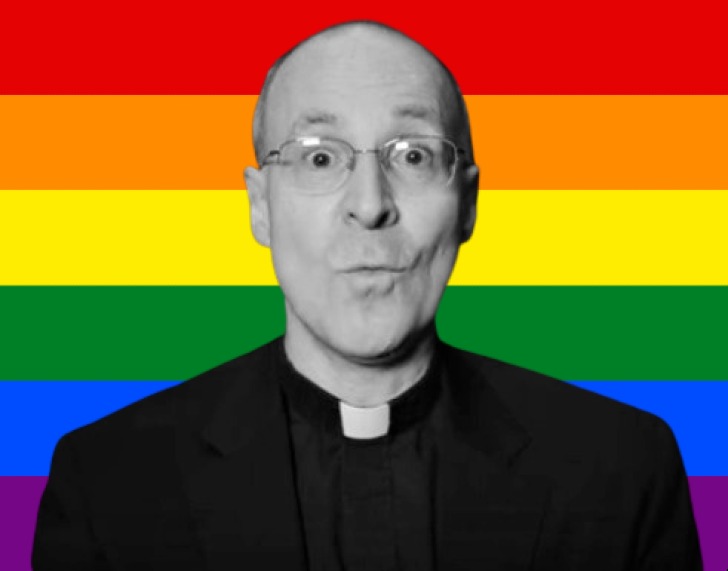
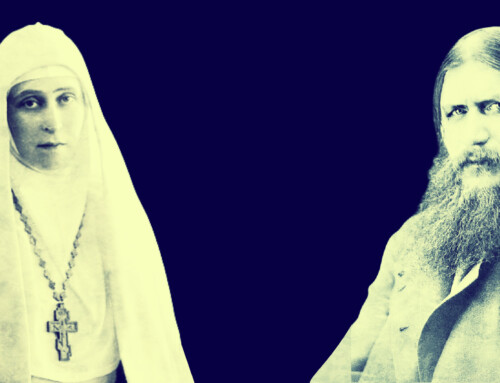
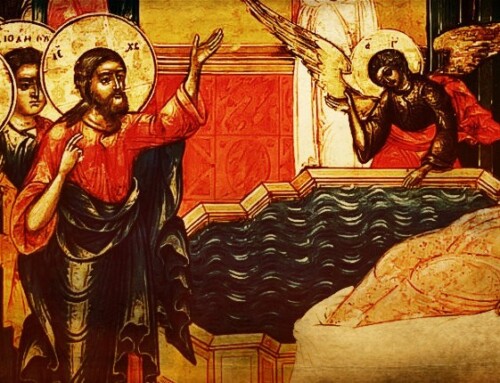
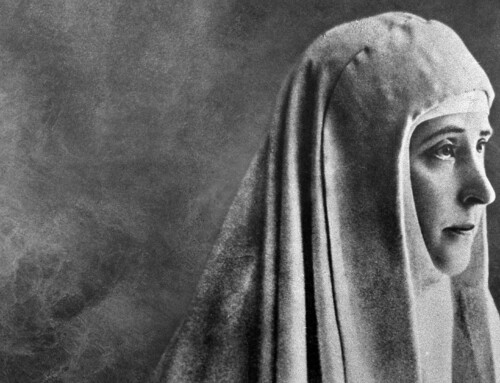
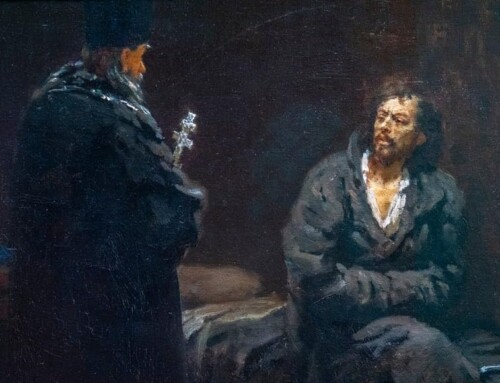
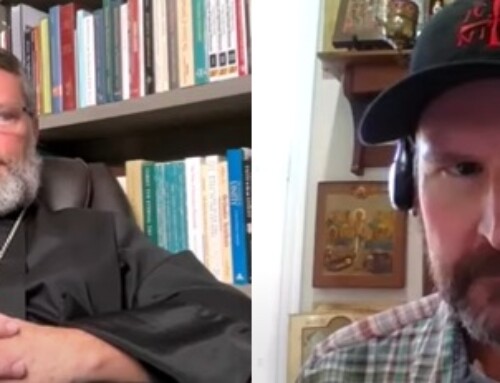
Always fascinating to hear your perspective, Joseph. Your insider’s view is just so important. I wish you could speak to young people everywhere, inundated as they are by the culture, and even in schools there is no respite, but more indoctrination. “Questioning” students are everywhere, girls often falling into the web, and students who are in Special Education. Many times students in Special Education state proudly they are transgender-queer, and some have “transitioned” to the other sex, so they believe. These children often have difficulty thinking about concrete issues, let alone the nebulous world of sexuality. And if they are presented with a possible reason for all their troubles, it is easy to see why they would take it, and the adults around them are so eager to virtue-signal and encourage their exploration and new cause. Most of the time, it’s not their child. But these students can be preyed upon by leaders in GSA Clubs, it has been reported, and they end up in worse shape than when they started, most likely. It’s a horror to consider the experiences they may have, that they are in no way ready for.
So honest and important. I have seen this both at St Paul and St. Ignatius in NYC. Thanks
I’m Italian and I can tell you that even in Italy (an allegedly conservative and catholic-oriented country) LGBTQ+ ministries are being created in some dioceses, while there is still a form of resistance on the part of truly catholic shepherds. But the situation is getting out of hand. Superficiality rules amidst the clergy… Come, Lord, come!
Thank you Joe!
Joseph, I’ve decided to make it my mission to introduce you and your work to as many of my family and friends as I can, especially those young adults who are skeptical if not downright confused.
I would also like to find solid mental health professionals who are pressing forward to learn the truth about the human person and the role of attraction and repulsion in personal development. Our society has virtually given up on this critical task.
God bless you!
“…we wish to make it clear that departure from the Church’s teaching, or silence about it, in an effort to provide pastoral care is neither caring nor pastoral. Only what is true can ultimately be pastoral. The neglect of the Church’s position prevents homosexual men and women from receiving the care they need and deserve.” – Letter to the Bishops of the Catholic Church on the Pastoral Care of Homosexual Persons
Who wrote this letter and when? Sorry, I am a new reader and don’t know the background.
My current practical understanding, is that the church is more gay than not. If not in actual numbers then in affirmation. The priests one speaks to just couldn’t care to fight the problem.
Its interesting that you say that this situation is more prevalent in big cities. Also very helpful is the information you give about the Dignity ministry. I always thought they were trying to do the opposite, but your perspective and experience makes sense considering the priests I’ve met. Thank you.